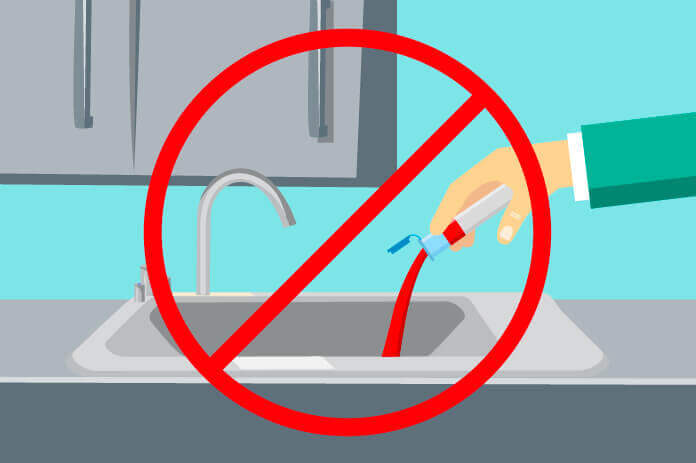The smart Trick of Reclaim Waste That Nobody is Talking About
The smart Trick of Reclaim Waste That Nobody is Talking About
Blog Article
The smart Trick of Reclaim Waste That Nobody is Talking About
Table of ContentsWhat Does Reclaim Waste Mean?Examine This Report about Reclaim WasteReclaim Waste Things To Know Before You Get ThisReclaim Waste Fundamentals ExplainedNot known Facts About Reclaim Waste
Residential sewage waste refers to the waste and items from a domestic septic container. The proper monitoring and disposal of domestic sewer waste require fluid waste to be transferred to a sewer treatment plant where the proper methods and equipment are applied to detoxify and dispose of waste.
Industrial waste often consists of possible risks, such as combustible materials or a blend of fluid and solid waste items, and calls for a much more advanced and in-depth disposal procedure. The disposal of industrial waste commonly involves the filtering of waste prior to transport to guarantee safe and appropriate disposal. Industrial waste is created from results and overflow of commercial processes and production.
This type of waste can not use the exact same sewage management transport or processes as septic or industrial fluids. The hazardous waste monitoring process calls for the evaluation and screening of liquid waste prior to it undertakes the disposal procedure (liquid waste removal). Drainage waste is the liquid waste that comes from runoff and excess stormwater in highly populated locations or cities
Runoff waste can trigger contamination and flooding otherwise handled correctly. Find out more concerning sewage system cleaning and waste monitoring. Guaranteeing appropriate waste management can prevent catastrophes and decrease ecological injury. Both people in household settings and specialists in industrial or manufacturing sectors can profit from recognizing the processes and laws of liquid waste monitoring.
Reclaim Waste Fundamentals Explained
Get in touch with PROS Services today to learn more about our waste administration and disposal solutions and the correct methods to look after the fluid waste you generate.
(https://hearthis.at/leon-aube/set/reclaim-waste/)Do you understand what occurs to your water when you draw the plug, flush the commode or drain pipes the cleaning device? No? Well, it deserves knowing. This so-called 'wastewater' is not just a crucial resource but, after therapy, will certainly be released to our land, waterways or the sea. Made use of water from commodes, showers, baths, cooking area sinks, washings and commercial processes is recognized as wastewater.

water used to cool down machinery or clean plant and tools). Stormwater, a form of wastewater, is runoff that moves from agricultural and metropolitan areas such as roofs, parks, gardens, roads, courses and gutters into stormwater drains, after rain. Stormwater moves unattended directly to regional creeks or rivers, at some point reaching the sea.
See This Report on Reclaim Waste
In Queensland, a lot of wastewater is treated at sewage treatment plants. Wastewater is delivered from residential or industrial sites through a system of drains and pump stations, called sewerage reticulation, to a sewage treatment plant. Regional federal governments build, maintain and run most sewage treatment plants. Operators are certified under the Environmental Management Act 1994 to discharge treated wastewater at an acceptable ecological criterion into waterways.
The Division of Natural Resources encourages neighborhood federal governments about handling, operating and preserving sewerage systems and treatment plants. In unsewered areas, city governments might need owners to set up private or household sewage treatment systems to deal with domestic wastewater from toilets, kitchens, bathrooms and washings. The Division of Natural Resources authorises using family systems when they are confirmed to be reliable.
In some new subdivisions, therapy of some stormwater to eliminate clutter, sand and gravel has begun using gross contaminant traps. Wastewater therapy takes place in four stages: Gets rid of solid issue.
Wastewater after that moves into big containers where solids work out and are eliminated as sludge. Oil and residue are skimmed from the surface area. Utilizes little living organisms called micro-organisms to break down and eliminate remaining liquified wastes and great particles. Micro-organisms and wastes are integrated in the sludge. Removes nitrogen and phosphorus nutrients that could trigger algal flowers in our waterways and endanger water life.
Rumored Buzz on Reclaim Waste
Nutrient elimination is not readily available in all sewer therapy plants because it requires expensive specialist equipment. It is becoming more common in Queensland. Clear fluid effluent created after therapy might still include disease-causing micro-organisms. If this effluent is launched into waterways such as rivers or the sea, the micro-organisms will eventually die out.

Many wastewater flows right into the sewage system. Under the Act, regional governments carry out approvals and permits for ecologically appropriate about his tasks (Periods) entailing wastewater releases that might have a local effect.
Things about Reclaim Waste
Monitoring supplies accurate details concerning water quality and can verify that permit problems are being fulfilled. The details obtained with surveillance provides the basis for making water quality decisions.
Report this page